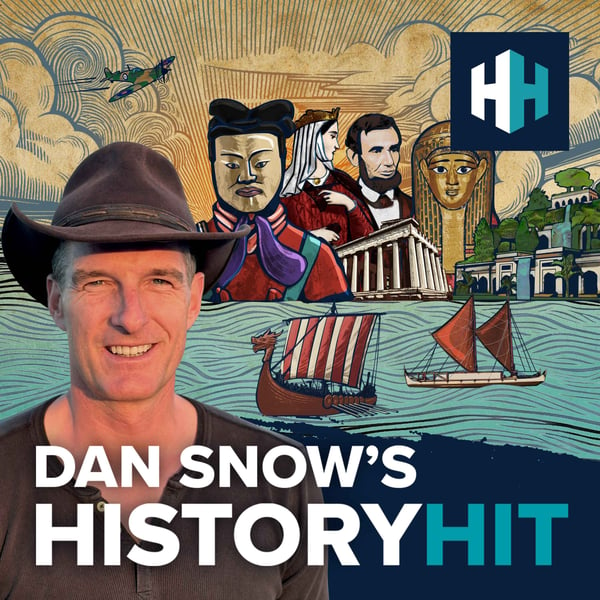How Did Humans Take Over the World?
Dan Snow's History Hit
History Hit
4.7 • 12.9K Ratings
🗓️ 12 June 2025
⏱️ 41 minutes
🧾️ Download transcript
Summary
Humans are everywhere. How did we get from the savannahs of Africa across to the most northern reaches of Alaska and Greenland, to the outbacks of Australia and the islands of the Pacific millennia ago? How did we master fire, figure out how to craft tools and survive the Ice Ages?
In this episode Dan is joined by Professor Chris Stringer, Research Leader in Human Evolution at London's Natural History Museum, to talk about how Homo Sapiens managed to outlive other human cousins like Neanderthals and Denisovans and cross oceans s hape landscapes and one day, build cities and space shuttles.
Produced by James Hickmann, Mariana Des Forges and edited by Tim Arstall.
You can now find Dan Snow's History Hit on YouTube! Watch episodes every Friday (including this one) here.
Sign up to History Hit for hundreds of hours of original documentaries, with a new release every week and ad-free podcasts. Sign up at https://www.historyhit.com/subscribe.
We'd love to hear your feedback - you can take part in our podcast survey here: https://insights.historyhit.com/history-hit-podcast-always-on.
You can also email the podcast directly at [email protected].
Transcript
Click on a timestamp to play from that location
| 0:00.0 | Hi, folks, welcome to Dan Snow's history hit. |
| 0:08.0 | 300,000 years ago, give or take, in the vast open spaces of Africa, a new kind of creature emerged. |
| 0:18.5 | It was clever, it was curious, it was built to Rome. They were homo sapiens. |
| 0:25.9 | And they would go on to outlive their many rivals, their close cousins as you'll hear, |
| 0:30.8 | they would cross oceans. They would reshape the landscape. They would eventually build cities |
| 0:36.4 | and space shuttles and eventually they would |
| 0:40.3 | fly a drone on Mars. And let's hope the story doesn't end there. But going all the way back to |
| 0:45.5 | the Guinea, how did Homo sapiens become the last human standing in a world once teeming with |
| 0:50.3 | other species of human? Neanderthals, Denisovicians, Denisovans, and even hobbit-sized hunters. |
| 0:59.0 | What did the world look like when we took our first steps? Why did we spread across continents, |
| 1:03.1 | adaptive fire, forge tools, survive ice ages and extinction events? This is the story of that |
| 1:09.3 | survival, but not only that is the story of how we became us. |
| 1:12.7 | In today's episode, we're going to dig into the latest science, the big theories, and the wild |
| 1:16.8 | mystery still be uncovered about our earliest ancestors. We got a guest who has spent years |
| 1:21.7 | unraveling the threads of our origin. That is Professor Chris Stringer. He's a research leader in human origins at the Natural History |
| 1:29.1 | Museum in London. He has been just at the heart of all this. A central contributor in paleoanthropology |
| 1:35.3 | for the last 30 years. He got a CB in 2023 for his contributions to the understanding of human |
| 1:40.8 | evolution. The story of human evolution is one of survival, adaptation, bit of extinction |
| 1:45.7 | thrown in. And this story has changed in the last 30 years. So if you learn this stuff at school, |
| 1:50.5 | buckle up. Now we recorded this episode for our YouTube channel and Chris brought in some of the |
| 1:54.7 | incredible skulls to help tell this story. So if you'll watch this episode and see what the |
| 1:59.7 | skulls look like, I'd recommend you |
... |
Please login to see the full transcript.
Disclaimer: The podcast and artwork embedded on this page are from History Hit, and are the property of its owner and not affiliated with or endorsed by Tapesearch.
Generated transcripts are the property of History Hit and are distributed freely under the Fair Use doctrine. Transcripts generated by Tapesearch are not guaranteed to be accurate.
Copyright © Tapesearch 2025.

